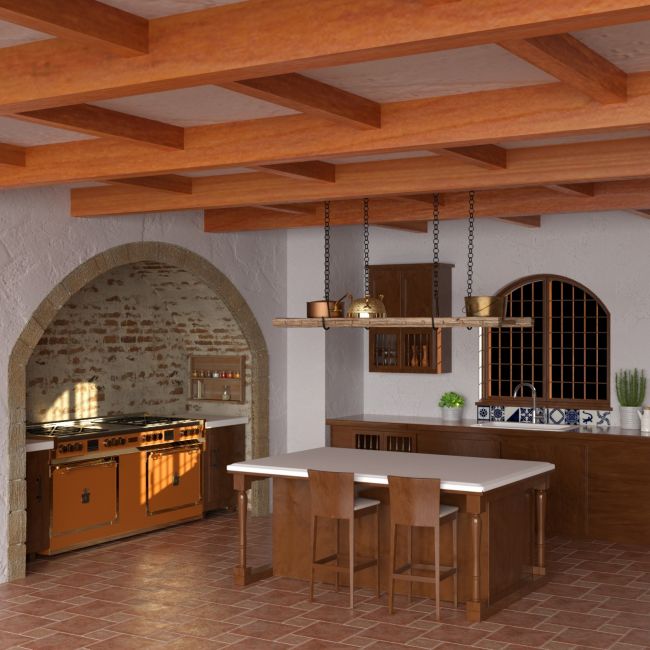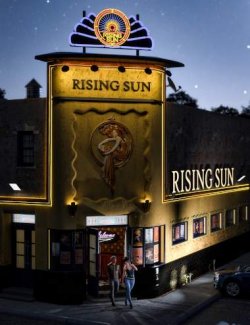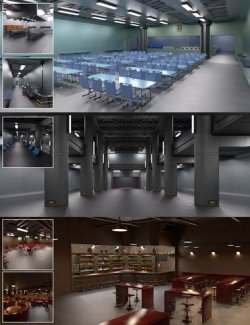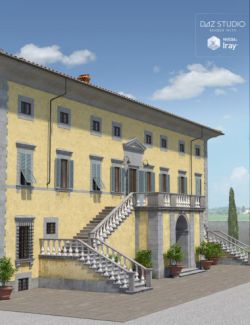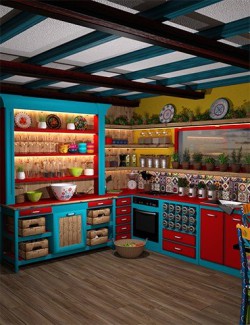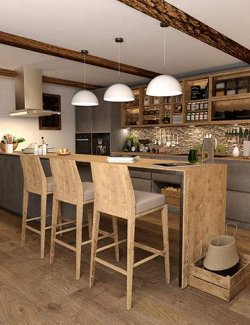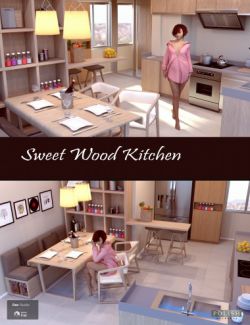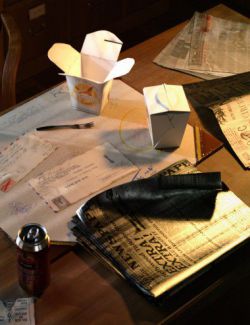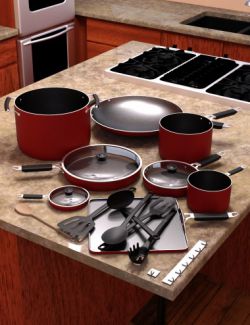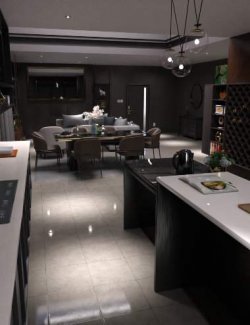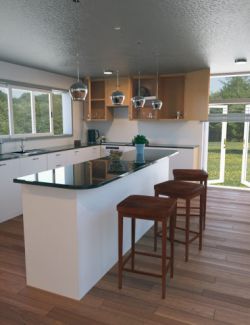Tuscany, an agricultural region in central Italy is the birthplace of the Italian language, the Italian Renaissance, ... and Chianti. The region is world renowned for its wine, food and moderate climate.
Food and wine are central to life in the homes of ordinary Tuscans. Tuscan kitchens are the center of the home and they have a distinct architecture with five or six classical elements.
Use of natural materials - stone walls, wood overhead beams, doors and windows, and wrought iron fixtures
Muted colors, especially in walls, - a lot of exposed brick
Stone or tiles floors
Arched windows and doorways
Large counter tops and work central islands
Overhead racks for pots and pans
This “volume” of the Kitchen Backgrounds has two models of classical Tuscan kitchens that allow you to compose domestic scenes with Poser, Daz or other figures, or add additional items to form a “still life” picture of an interesting room. These models are in *.fbx file format.
The first Tuscan kitchen (Kitchen #3) has a long counter in the back of the room. This is flanked by a built-in pizza oven (typical of many Tuscan kitchens) and a modern Tuscany Model Viking on the left and a wooden hutch with tableware on the right. A small window on the right and an arched window directly over the sink provide light directly to the kitchen counter. Larger windows and doors on the right side of the room open to a patio As is typical for Tuscan kitchens, there is both a central island table for food preparation, and a separate set of chairs and table for eating meals – in this case directly in front of the patio windows.
The second Tuscan kitchen (Kitchen #3) has a different configuration of these same five elements. In this case, the cooking area is set into the old, original brick alcove, and the central work island has an overhead rack for storing pots and pans.
Both models are designed with long depths to allow for many different camera positions, angles and focal lengths. Both models are “spacious:” human figures can be placed in them in many different ways, and there are plenty of surfaces to add items like wine bottles and glasses, pasta-making machines, vases and plants. Both models are designed to work well with image-based lighting as well as with various studio lighting arrangements.
In these two models, most of the individual objects are fixed into place – they cannot be saved out as individual objects and used in other scenarios. However, the islands, the tables and chairs and the potted plants can be re-arranged in the kitchen rooms as desired (and these can be saved out as individual objects for use in other scenes).
Software: FBX Format
